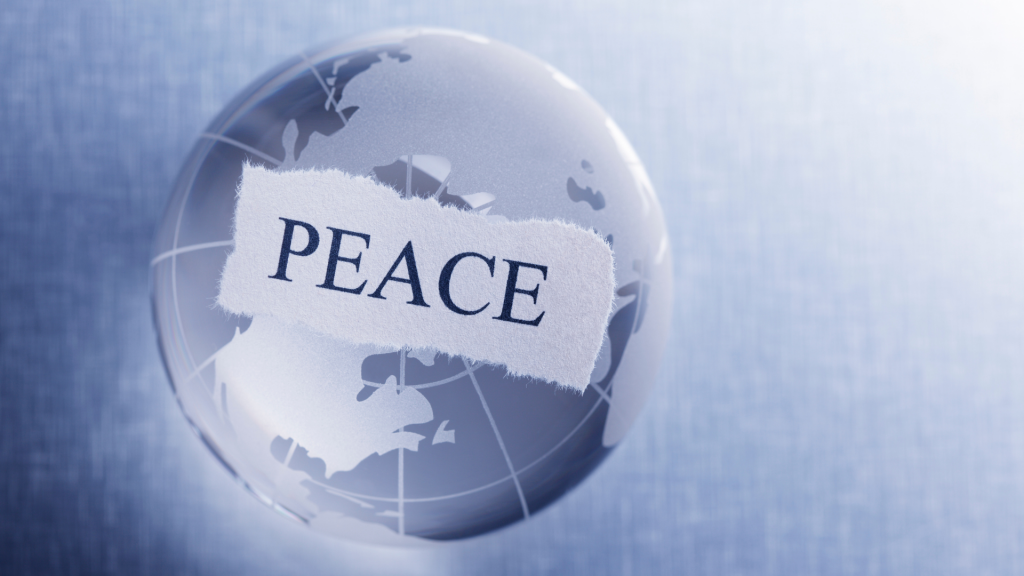Peacemakers

“[Jesus] taught them, saying…’Blessed are the peacemakers, for they will be called children of God.” – Matthew 5:2, 9
What does it look like to make peace?
It’s a difficult and desperate question to ask as we hear stories of mass killings in Saskatchewan, as we continue to grind our teeth over the divisiveness in our society, as our nation marks the 21st anniversary of the 9/11 attacks which transformed our world.
All that (and much more) makes us long for peace, makes us pray for peace. But it doesn’t always inspire us to make peace.
In a marriage, this is a common pattern: one partner’s defensiveness triggers the other partner’s defensiveness; one partner’s insults trigger the other to insult. Does this build peace in a relationship? Probably never. And yet that is what comes most naturally to us.
It seems like that pattern extends into our wider social sphere as well. As we feel more and more intractably divided along political, social, and even medical lines – what is our gut instinct? We all know the common culprits: social media arguments; choosing to live inside echo chambers; avoiding those who are different from us. All things that (generally) exacerbate the problem.
What does it look like to make peace instead?
And let’s make sure we’re clear about what we mean by peace. Not the easy, watered-down peace that comes when we decide to avoid the issues that divide us.
What we really long for is an active peace. The peace that comes from true safety, from mutual respect, from connection with our others.
What does it look like to make that kind of peace?
Sociological studies point us to the idea of social capital – and in particular, bridged social capital. “Social capital” is basically our connections with other people around us, which lead a community as a whole to function in certain ways. “Bridged social capital” refers specifically to the connections we create with people who are different from us (different race, generation, beliefs, etc.).
Various studies have shown that greater bridged social capital is correlated with reduced violence between groups and a greater ability to live together with folks who are significantly different from us.
It’s interesting that these studies point us right back to the greatest commandment: “You shall love the Lord your God with all your heart, and with all your soul, and with all your might…you shall love your neighbor as yourself” (Matt. 22:37; Luke 10:27).
What does it look like to make peace?
It looks like listening to connect instead of to respond.
It looks like playing soccer with people from different countries.
It looks like Christian and Muslim communities getting together for a potluck and talking about why service is important to both traditions.
As it turns out, peace-making isn’t the special task of ambassadors and negotiators. Peace-making is a power given to every single child of God.
O God, it is your will to hold both heaven and earth in a single peace. Let the design of your great love shine on the waste of our wraths and sorrows, and give peace to your Church, peace among nations, peace in our homes, and peace in our hearts. Amen. [From A New Zealand Prayer Book]
Pr. Kate
Sept. 7, 2022
Rev. Katherine Museus Dabay takes turns writing weekly devotions with Rev. James A. Wetzstein at Valparaiso University, where both serve as university pastors.
- Katherine Museus
- God is Not Overwhelmed
- The Power of Seeing
- Have you been gathering stories?
- Fruit of the Spirit
- Ash Wednesday Stories
- Good Soil
- War in Israel
- God Who Sees
- God’s Ridiculous Ways
- Lives Rooted in Rest.
- “In Thy Light” May Be More About Love than Knowledge
- Be assured: You are forgiven
- Being called to sacrifice
- Creation + God’s Law
- Does this world matter to God?
- Fire on the Mountain
- Lessons from Our Lady of Guadalupe
- Little things
- Peacemakers
- Pulled in two directions
- Questions to ask at the end of the year
- Reflecting on the contrast
- What Do You Want?
- When our loved ones die